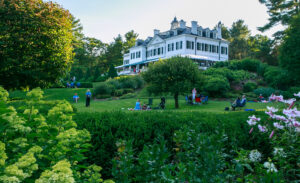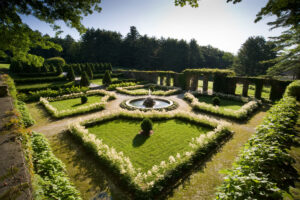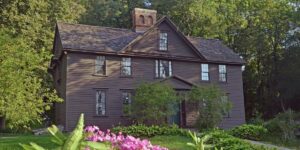By David Wilkening, Contributing Writer

Photo/Sarah Kenyon
Many of the 50,000 visitors a year to what has been termed the “glorious, Gilded Age estate” of famed writer Edith Wharton in Lenox never read any of her 40 books.
“I’d guess it’s about 50-50, for the bookish and non-readers who visit The Mount,” said Rebecka McDougall, director of communications and community outreach.
The estate of the Pulitzer Prize-winning author includes her home, as well as the author’s original library and a pair of European-inspired gardens.
“Even if they haven’t read her books, they find the home of interest and they can stroll through the extensive gardens,” added McDougall, who admits she has not read all the novelist’s books, which include non-fiction work as well. One interesting element is that Wharton’s best-known book, set in the 1920s ̶ “The Age of Innocence” ̶ still has relevance to today’s readers and non-readers.
“She wrote about her own gilded age and there are a lot of parallels today, such as inequality. Her stories were about restrictions placed on women of all classes,” observed McDougall.
European influence on house and gardens
The parking area is about a quarter mile from the house but golf cart-style transportation is available to chauffeur visitors to the home and grounds.
“Every room in the house also has chairs where visitors can sit for a rest,” McDougall added.

Photo/John Seakwood
Wharton’s life at the Mount for a decade was not a happy one. She was trapped in a loveless marriage.
Wharton grew up in a wealthy New York City family with old Dutch and English ancestry. She spent her youth traveling Europe. She was strongly influenced by its art, landscape design, and architecture. Fifteen years into her marriage to Teddy Wharton, she designed the home and gardens in Lenox that she dubbed The Mount, which was completed in 1902. She “lived and gardened and wrote contentedly there,” for ten years, McDougall explained.
Advanced tickets for touring the house, a National Historic Landmark, are recommended. But visiting the grounds is free and they are open daily for all visitors from dawn to dusk.
The Mount is one of two monuments to the state’s most famous women writers that are currently open for tours. The other is Louisa May Alcott’s Orchard House in Concord.
The setting for “Little Women”

Photo/Submitted
Alcott’s more modest two-story family home in Concord is far older than Wharton’s and has the advantage of having more original objects used by the family. Orchard House, built in 1650, is most noted as the model where the author wrote and set her famous novel “Little Women” in 1868.
The Alcott family moved into Orchard House in 1857. The novelist’s father, educator and philosopher Amos Bronson Alcott, bought the manor house for $945. The property was named after a 40-tree apple orchard. A highlight for visitors is the shelf desk built by her father where Louisa May wrote “Little Women.”
Another highlight is that the home furnishings are about 80 percent authentic, looking much as they did when the book was written.
Walking through the book
Modern-day visitors often comment that a trip here is “like a walk through ‘Little Women.’” Guided tours introduce visitors to the family members themselves, the household items that held meaning for them and their influence on the beloved novel and later movies.
One example is found in the downstairs parlor with a pillow where the author warned of her tempestuous moods, turning it one way when she was good tempered and another when she was not.
The significance of the home in her book was evident in this passage:
“I’m not ambitious for a splendid fortune but I know how much genuine happiness can be had in a plain little house, where the daily bread is earned, and some privations give sweetness to the few pleasures.”
Not open to the public earlier in the COVID-19 pandemic, it recently began visitation with a timed-entry admission. Similar to many other places, it has a face mask requirement for visitors and staff. “Please note that due to capacity limitations, we cannot guarantee ticket availability for ‘walk-ins’ but will make every effort to accommodate safely for as many visitors as possible,” the website noted.
For more information, visit edithwharton.org and louisamayalcott.org.
RELATED CONTENT:
Beautiful Spots for Fall Foliage Viewing in New England (fiftyplusadvocate.com)
5 of the best craft breweries in Central Massachusetts to quench any thirst (fiftyplusadvocate.com)
Cape Poge showcases Chappaquiddick Island’s natural beauty (fiftyplusadvocate.com)












